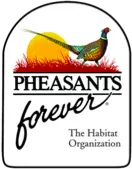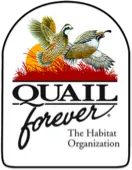Ruffed Grouse
The Ruffed Grouse hunting season has been in full swing for two weekends now in Minnesota; the American Woodcock season opened the past Saturday with the waterfowl season. Preliminary reports are good. Sam and I have been finding grouse in our traditional spots. I always say that 90% of the grouse are in 10% of the habitat; find that and go back year after year and you will typically find birds – but there are exceptions to the rule. The past weekend was very wet and rainy for several days on end; parts of Minnesota received over five inches of rain. Sam and I found grouse in the wide-open woods – not in the typical thick cover where you would expect. My guess is, grouse were finding that walking in the thick stuff would get them sopping wet, fast – just like we were. Hunkering down under the mature canopy must have been better for some. Sam stuck one, and I was able to collect it, shortly after “jump shooting” a beaver pond that was loaded with wood ducks. “Woodies” are plentiful in Minnesota, and may well be our most numerous duck this time of year. Sam and I find it difficult to pass up the opportunity for a mixed bag when it presents itself.

I have a good network of upland game hunters that I am in contact with throughout Minnesota; overall – it appears that hunters are happy with results throughout the state, and especially in the northern third of the state – where Sam and I will be guiding for the first three weeks of October.
Tip: When you think about what Ruffed Grouse need to live – consider food, water, edge, cover from avian and ground predators, and areas to roost. The best grouse habitat contains a mixture of cover that includes aspen, alder, conifer, swamp edge and grass. Clear cuts are vital for grouse; I like to focus on clearcuts less than 15 years old. Drumming logs are also important; hear grouse drumming in the spring and you can bet that some breeding went on in the vicinity, and broods likely hatched nearby. Also keep in mind that though grouse drum the most in spring, they also drum throughout the year (yes, even in winter) and they can be heard on warm, calm sunny days throughout the fall.
But my primary tip here is to focus on food. The following photos depict what I commonly find in the crops of grouse in September, October and November (before snow). Always check the crops of grouse to see what they’ve been eating; I’ve been doing this for over four decades – and these are the items I find most consistently in grouse crops. Find these species, along with the other ingredients I mentioned – and you’re likely to find Ruffed Grouse nearby: Gray Dogwood, Clover, Wild Strawberry, Sumac, Wild Grapes, and in general, green-leaf species right on the forest floor.
Gray Dogwood and berries


Wild grapes and Sumac


Clover and Wild Strawberry


Another key reason why “edge” is so important, is that the above species thrive where there has been disturbance. For instance, you will almost always find several of these species along logging roads leading to and from clearcuts, and the clearcuts themselves… anywhere where the ground has been disturbed. Add the species of the Genus Rubus (raspberry, blackberry, rose hips) and you have a concoction that is almost sure to attract Ruffed Grouse.
American Woodcock forage for earthworms along swamp edges, underneath willows, alders and hazel, and especially in the new aspen growth of clearcuts that are less than ten years old. If you can find aspen clearcut less than one inch in diameter, with little grass and ferns underneath – then you will likely find our local woodcock population living there. I’ve found that the migration will peak around mid-October; go out with a dog around that time and it will blow your mind how many “timberdoodle” you’ll see passing through from north of us! But come November, they’re almost all gone south… with the ducks and many other migratory birds.


Wood Ducks: Back in the day when I was growing up – mallards were king, and wood ducks were much more rare. Now, it’s getting more and more difficult to find mallards – but wood ducks seem to be just about everywhere. It doesn’t take much to draw them: any swamp edge with a thin strip of water up against the bank, lake edge with overhanging brush, and especially beaver ponds. As with Ruffed Grouse, I analyze the contents of the duck’s crop and gizzard – and find that a favorite food for “woodies” is acorns; find water near mature woods with cavities where these fowl nest, along with steep banks that allow the dropping fruit to bounce and roll near the waters edge, and you’ve got a dynamite location. Find overhanging oaks that allow the acorns to go kerplunk – directly into the water, and that’s even better yet!
Sam and I will often start the morning on a beaver pond such as one I described above. These are rarely roosts (the birds sleep elsewhere) – but right about shooting time, woodies will come buzzing in to eat and loaf for the day. We like to be there waiting for them, while we wait for the grouse to wake up and start moving. Grousing, combined with jump-shooting ducks – can be a fantastic way to spend a fall day, out in the woods – enjoying the leaves.
.


October Special: Sam and I will be hunting, fishing, and guiding from Pelican Lake near Orr, Minnesota from September 30-October 21. When the leaves drop and the forest clears, I move to points north where grouse numbers are significantly higher than in the lower two thirds of the state. This gives us much more action, and thus, much better chance for success. Hook (fish Pelican Lake), Trigger (hunt Ruffed Grouse and American Woodcock), or do the “Hook and Trigger” option (half day of each); $850 for two people. Many of my days are booked, but I still have a few openings; if you are interested in this great opportunity – call me right away at 218-232-6067.
Below: A great morning of Grouse Hunting with Hook-n-Trigger Guide Service in Northern Minnesota.
.
Enjoy the wonderful fall,
Tim and Sam




